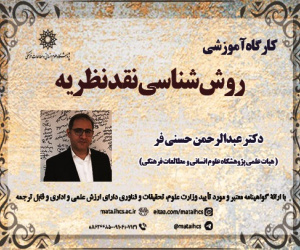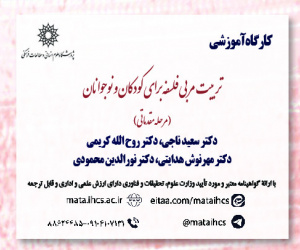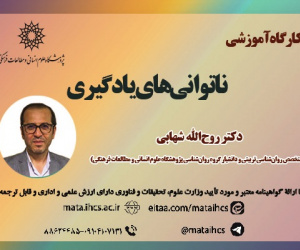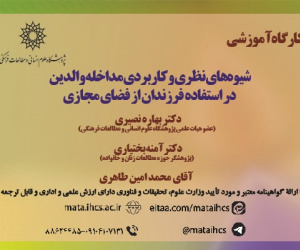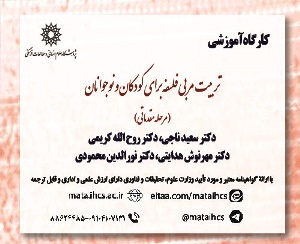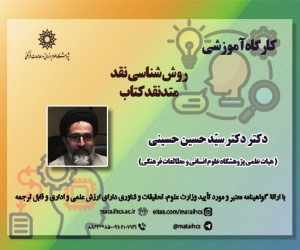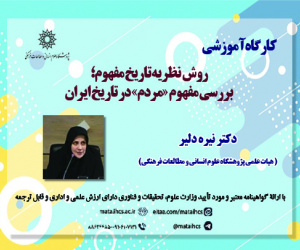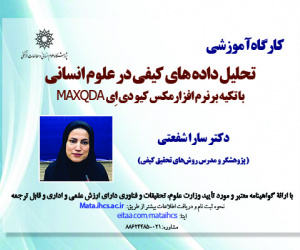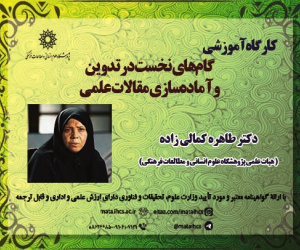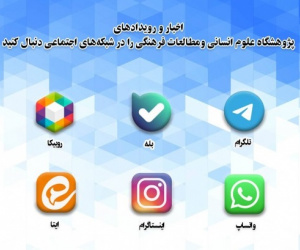طراحی مدل برون سپاری در سازمانهای دولتی استان مرکزی (مقاله علمی وزارت علوم)
درجه علمی: نشریه علمی (وزارت علوم)
آرشیو
چکیده
هدف این تحقیق طراحی مدل برون سپاری در سازمانهای دولتی استان مرکزی می باشد. این تحقیق از نظر هدف کاربردی و از نظر ماهیت پیمایشی-توصیفی می باشد. جامعه آماری پژوهش شامل مدیران کل در سطح استان مرکزی، که تعداد 152 نفر از آن ها با استفاده از جدول مورگان انتخاب شدند و روش نمونه گیری در این پژوهش به صورت نمونه گیری تصادفی می باشد. ابزار جمع آوری داده ها پرسشنامه می باشد. روایی این پرسشنامه به صورت روایی سازه و پایایی با ضریب آلفای کرونباخ محاسبه شده است. برای تجزیه و تحلیل داده ها از نرم افزار SPSS22 و در بررسی مدل ساختاری از روش مدل یابی معادلات ساختاری استفاده گردید. نتایج نشان داد که در طراحی مدل برون سپاری 5 عامل اجتماعی، مدیریتی، اقتصادی، سیاسی تأیید و شناسایی شد. همچنین شاخص های برازش نشان از برازش مناسب مدل مفهومی تحقیق می باشد. در نهایت عوامل و مؤلفه های مؤثر بر طراحی مدل برون سپاری در سازمانهای دولتی استان مرکزی مورد تأیید قرار گرفته است.Designing the outsourcing model in central government organizations
The purpose of this research is to design the outsourcing model in the Markazi province government organizations. This research is applicable in terms of purpose, and descriptive in nature. The statistical population of the research includes general managers of Markazi Province, 152 of whom were selected using Morgan's table, and the sampling method in this research is random sampling. The data collection tool is a questionnaire. The validity of this questionnaire has been calculated as construct validity, and reliability of it with Cronbach's alpha coefficient. SPSS22 software was used for data analysis, and structural equation modeling method was used to examine the structural model. The results showed that in the design of the outsourcing model, 5 social, managerial, economic, and political factors were confirmed and identified. Also, the fit indices show the appropriate fit of the research conceptual model. Finally, the factors and components affecting the design of the outsourcing model in the government organizations of Markazi Province have been approved.
Extended
Introduction
Today, organizations operate in an environment that is constantly changing. These changes have led to increasing competition, complexity, dynamism and environmental uncertainty. Today's problems of organizations cannot be solved with yesterday's solutions. Organizations can no longer ensure their long-term survival and success with structural changes such as changing methods, systems, technology, etc. In such a situation, the survival and successful life of organizations depends on the transformation of the infrastructure and the creation of conditions that can consider outsourcing as the only way to maintain the competitive position of the business. Many managers saw outsourcing as the only way to maintain a competitive business position in the early 20th century (Hasasnpor et al, 2021). Outsourcing is the transfer of the management of a process or task from within the organization to external suppliers, or in other words, outsourcing means the presence of an external supplier that provides a service that is normally performed within the organization. Outsourcing is nothing less than restructuring the main capabilities and external relations of the organization (Firouzbakht & Faqihi, 2016). The issue of outsourcing is related to the supply of goods and services from external suppliers, which were previously produced inside the outsourcing organization. Outsourcing is related to the transfer of a complete functional department of the business or some activities of a functional department and keeping the rest of the activities of that department internally. Outsourcing can also include the transfer of employees and fixed assets (Ravaghi et al, 2018). By outsourcing activities for which they do not have the necessary resources or internal capabilities, organizations can achieve complementary capabilities of suppliers, while they are not able to gain advantages by doing them internally. Therefore, outsourcing not only allows companies to reduce costs, but also to improve their portfolio of capabilities and value creation potential, especially when companies use the capabilities provided by these markets to produce unique compounds (Samadzade et al, 2020). According to the above, the main question of the research is: What is the outsourcing model in the government organizations of Markazi Province?
Theoretical Framework
Outsourcing
Outsourcing can be defined as outside management from the inside, and the transfer of non-strategic processes to the outside of the organization and focusing on the basic processes within the organization, or outsourcing can be defined as the act of finding services from an external source (Gambal et al, 2022). Outsourcing is considered to be a fundamental feature of organizational restructuring, which has significantly changed the traditional boundaries of organizations. Outsourcing can be called one of the biggest structural changes in organizations and industry in the century. Outsourcing is contracting with outside the organization to perform activities which are mostly carried out within the organization (Feyzi, 2021).
Maleki & Bagherzadeh Fard (2022) investigated outsourcing and exploratory innovation on industrial marketing strategies and customer behavior. The results show that exploratory innovation has a positive and significant effect on customer behavior. Exploratory innovation has a positive and significant effect on industrial marketing strategies. Outsourcing has a positive and significant effect on customer behavior. Outsourcing has a positive and significant effect on industrial marketing strategies.
Chen & Shen (2021) examined the effects of offshore and land outsourcing on China's promotion in global value chains with evidence from its manufacturing and service sectors. Additional empirical results also show that the headquarters' economy and human capital strengthens Offshoring outsourcing influence over China's GVC promotion. Finally, based on the empirical findings, they extracted some policy implications for the Chinese government.
Research methodology
This research is applicable in terms of purpose, and descriptive in nature. The statistical population of the research includes general managers of Markazi Province, 152 of whom were selected using Morgan's table, and the sampling method in this research is random sampling. The data collection tool is a questionnaire. The validity of this questionnaire has been calculated as construct validity, and reliability of it with Cronbach's alpha coefficient.
Research findings
SPSS22 software was used for data analysis, and structural equation modeling method was used to examine the structural model. The results showed that in the design of the outsourcing model, 5 social, managerial, economic, and political factors were confirmed and identified. Also, the fit indices show the appropriate fit of the research conceptual model. Finally, the factors and components affecting the design of the outsourcing model in the government organizations of Markazi Province have been approved.
Conclusion
The current research was conducted with the aim of designing an outsourcing model in the Markazi province government organizations. The findings are consistent with the results of Nikkhah (2022), Goodair & Reeves (2022), Gambal et al, (2022), Maleki & Bagherzadeh Fard (2022), Chen & Shen (2021), Samadzade et al, (2020), Bertaleroa et al, (2020), and Navidi et al, (2018). Samadzade et al, (2020) have stated in a research titled "identification and ranking of strategic policy components in information technology outsourcing" that according to the results, strategic policy has three components of analysis and formulation of the policy, the implementation of the strategic policy, and the evaluation of the strategic policy. Also, information technology outsourcing has seven components of information technology system performance, providing system support services, green information technology, application gap of information technology, strategic importance, features of the organization, and the project and the characteristics of the project suppliers.
According to the results of the research, the following suggestions are provided:
Creativity: Creativity is the introduction of new ideas or methods based on which something is made or done. Creating outsourcing and innovation requires creativity. Creativity is a very effective skill in a complex and rapidly changing world, with which more valuable alternatives can be found to solve conventional problems. The organization cannot force its employees to be creative, but in order to create a culture of creativity, an atmosphere of generosity, forgiveness, and security must be provided so that they can create the most productivity for the organization with minimal cost.
Collaboration: The level of active help of the people of a group to each other is called collaboration. The culture of cooperation leads to reducing fear and increasing efficiency and productivity in the organization. Cooperation between people makes them reach a common understanding of the internal and external environment of the organization.
